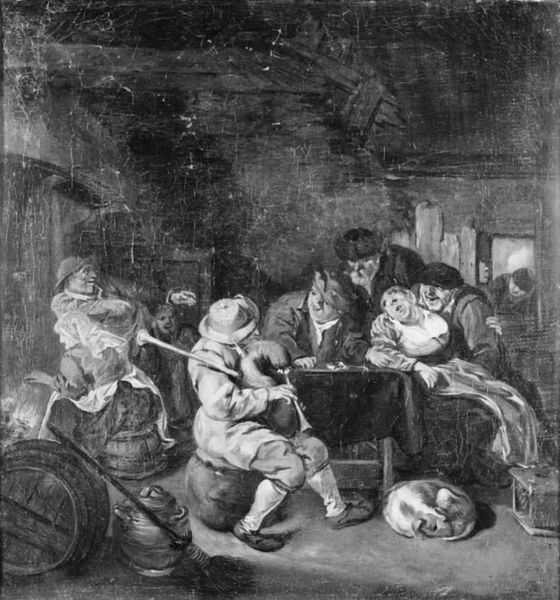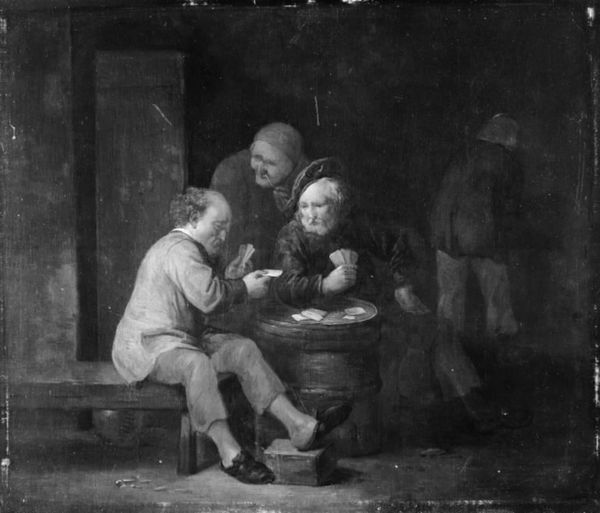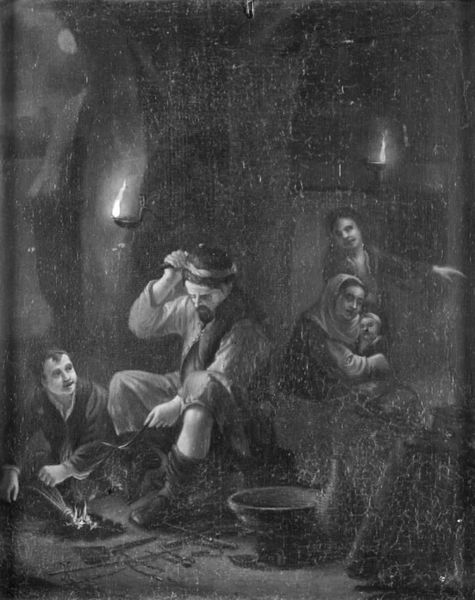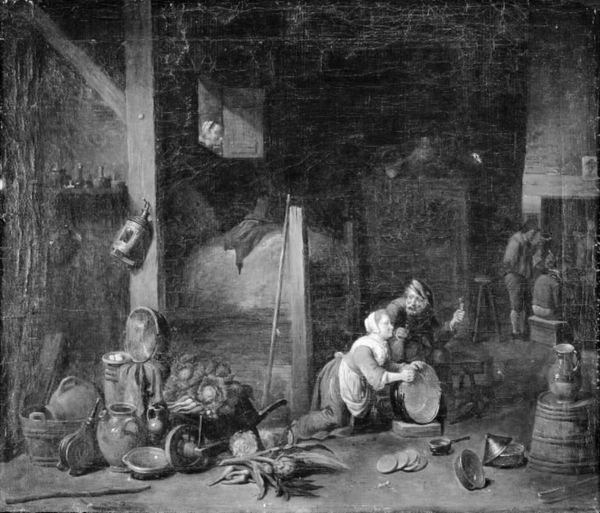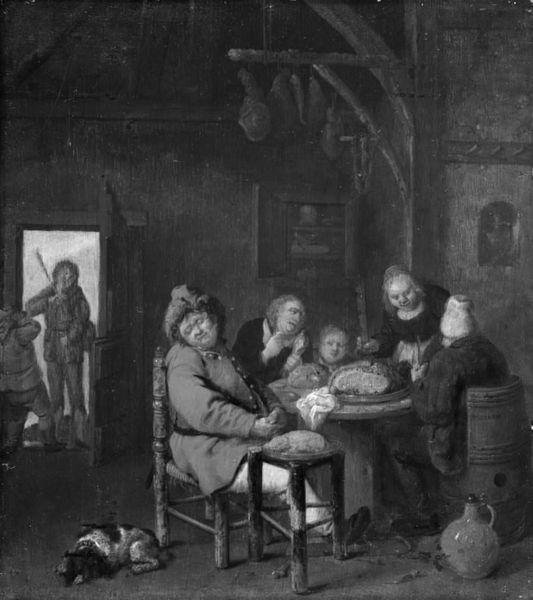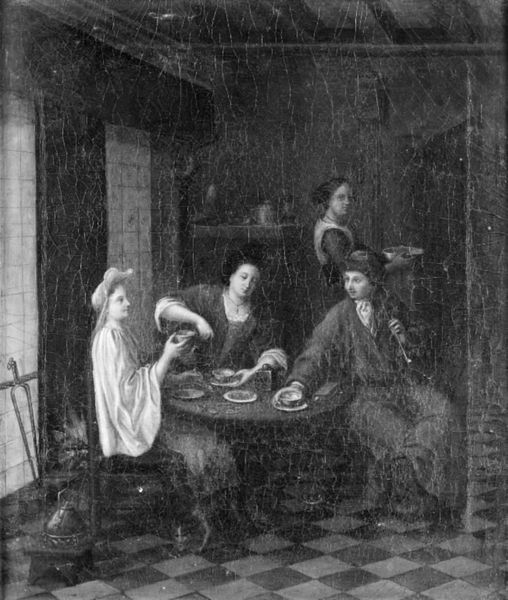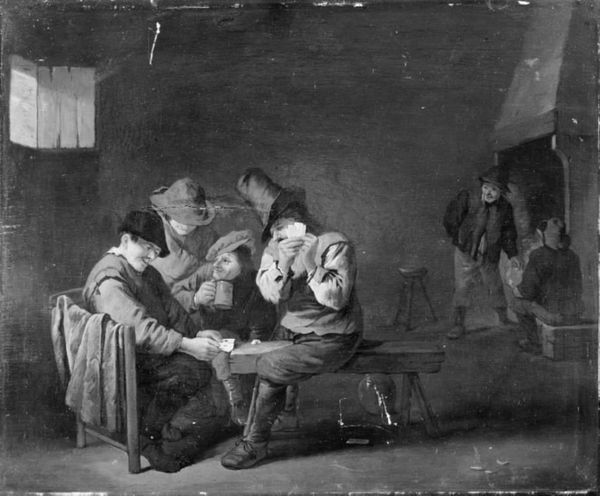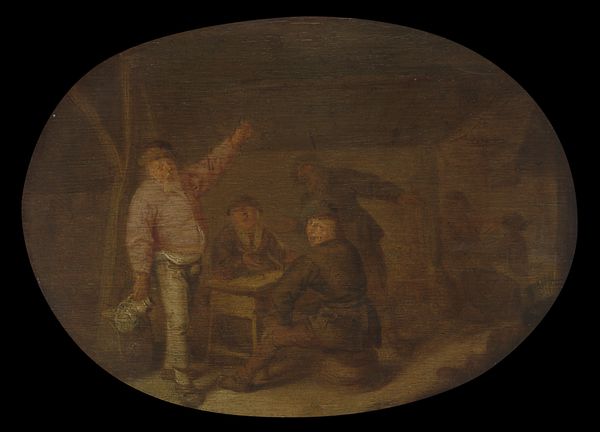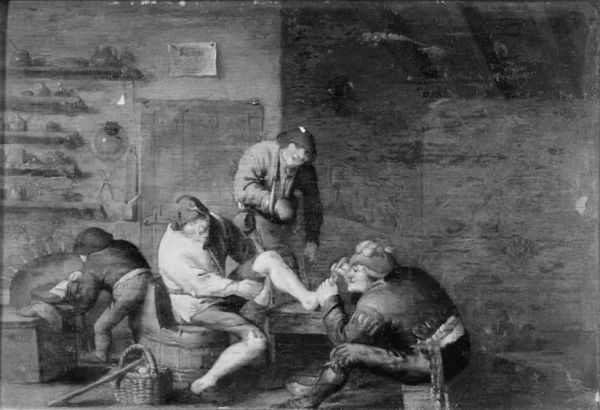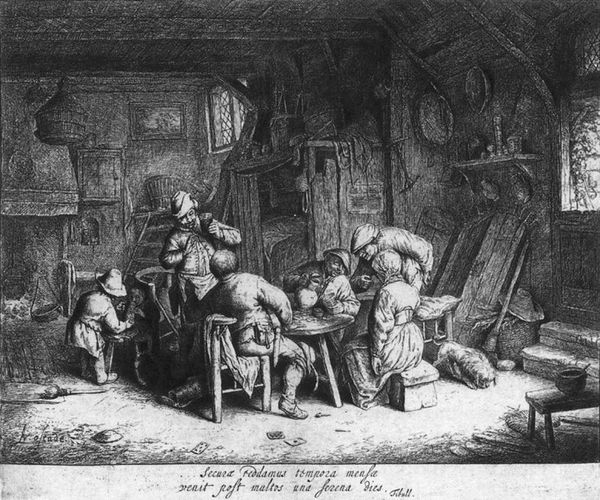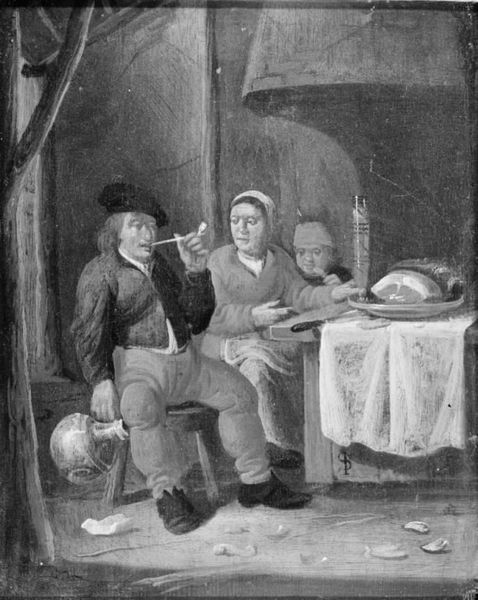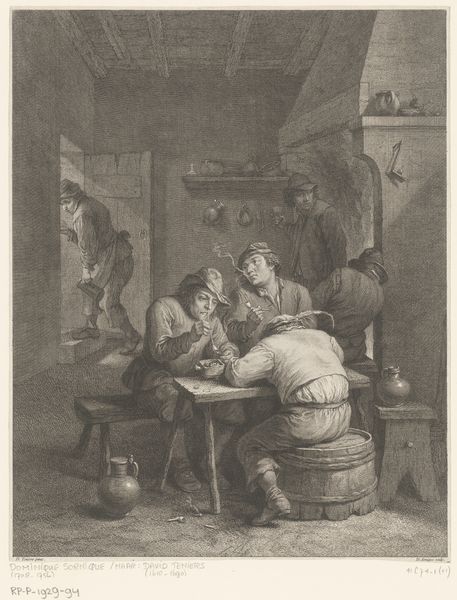
painting, oil-paint, wood
#
portrait
#
narrative-art
#
dutch-golden-age
#
painting
#
oil-paint
#
wood
#
genre-painting
#
monochrome
#
monochrome
Dimensions: 35 cm (height) x 32 cm (width) (Netto)
Curator: Ah, here we have Jan Miense Molenaer’s “Peasants at an Inn,” thought to have been crafted sometime between 1625 and 1668. It’s part of the collection here at the SMK. Editor: My first impression? Claustrophobic conviviality! So much happening within such confined space. It's almost entirely monochromatic too... very heavy on the shadows. Curator: Quite. It's genre painting at its best. Molenaer excelled at depicting scenes from everyday life, warts and all. The piece utilizes oil paint, applied with great sensitivity to textures onto, I believe, a wood panel. And yes, that nearly complete lack of color is certainly striking—like peering through a smoky haze. Editor: Wood panels...a deliberate choice reflecting limited material options for a booming merchant class suddenly hungry for art, right? These paintings served a function – almost like proto-photographs of daily experience. And look closer—you see figures not just consuming, but *processing*, laboring over games, drink, or perhaps something more nefarious in that darkened corner... Curator: Interesting point about their activities. I often wonder what stories lie beneath the surface. Is that elation or despair etched onto the gamblers' faces? What brought that lonely character in the background to such quiet observation? The beauty is in that open ended interpretation. Editor: Right. There’s labor happening within that canvas, depicting leisure and… something else? This isn’t high society, obviously, but folks carving out lives amid very specific social and material conditions. Consider that anonymous artisan prepping the wooden support-- his contribution just as critical. Curator: A fair observation. Molenaer, even depicting boisterous energy, captures the silent stories underpinning existence so well. And from the materialist's vantage point, what can we deduce about its reception in his day, do you imagine? Editor: It likely traveled among circles who valued documentation, and mirrors their own social realities even today. Every brushstroke echoes with class, labour, production! Curator: Well said. The layers continue to unveil new dialogues after all this time. Thank you. Editor: Absolutely. It is fascinating seeing material conditions mirroring artistic interpretations.
Comments
No comments
Be the first to comment and join the conversation on the ultimate creative platform.
